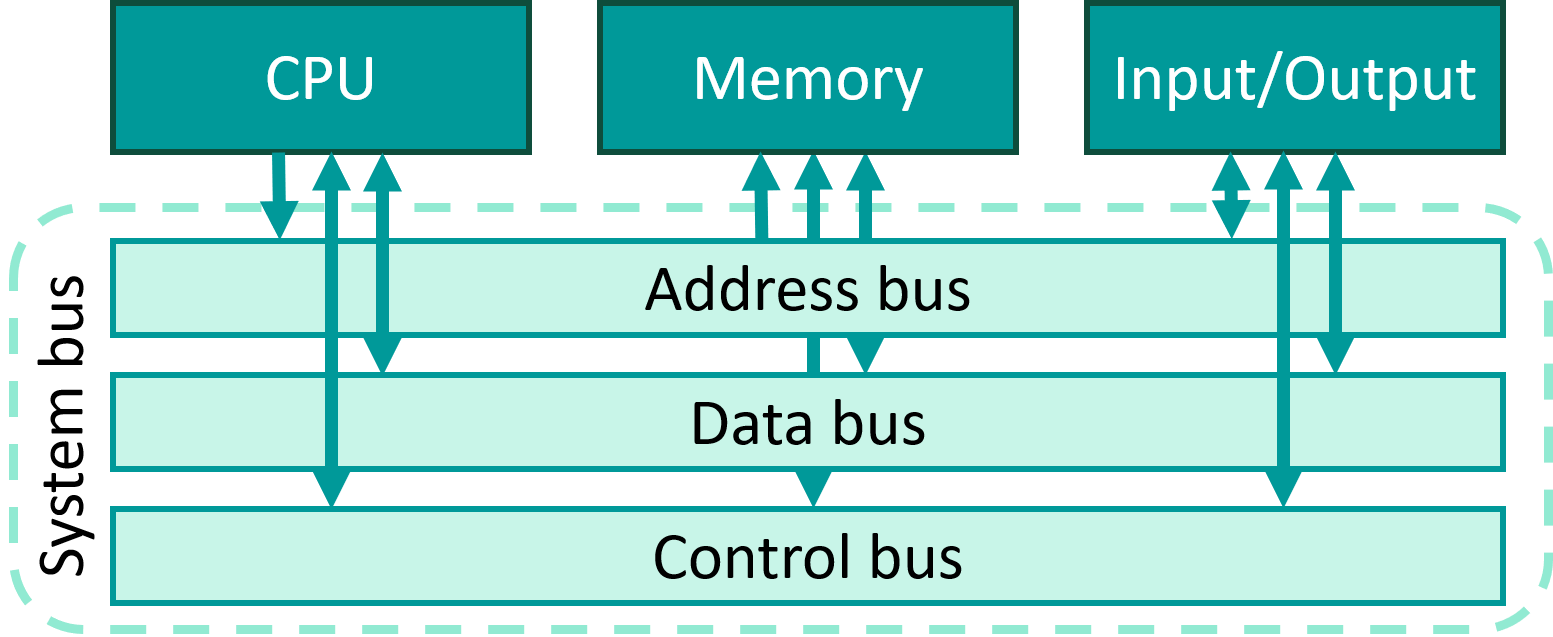11.3.2.2 describe the purpose of CPU components, system bus and main memory System bus System bus (extended in grade 12)
The main bus is the SYSTEM BUS Its actually made up of 3 separate buses, but when we join them together we can just call it the System Bus
Address Bus Function: Carries the address of the location to be accessed (for either read or write). Unidirectional: The CPU sends out addresses on this bus to the main memory or other I/O devices to select a location for reading or writing, but devices don't send addresses back to the CPU on this bus. Width: The width (number of wires or lines) determines how many memory locations can be addressed. For example, a 16-bit wide address bus can access 2^16 or 65,536 unique memory locations. Data Bus Function: Transfers actual data between the CPU and memory or I/O devices. Bidirectional: Data can flow both ways. The CPU can read data from memory or write data to it. Width: The width of the data bus (often called the word size) often determines the amount of data a CPU can process at once. For example, a 32-bit data bus can transfer 32 bits of data in a single operation. Control Bus Function: Carries control signals to manage and direct the operation of the entire computer system. These signals can indicate whether a current operation is a read or write, whether the system should interrupt the current process, etc. Bidirectional: Some control lines are unidirectional, while others might be bidirectional, depending on the nature of the control signal. Signals: Some common control signals include:
Questions: 1. What is a computer bus?
2. System bus includes …
3. What is an I/O controller?
4. Explain the role of the address bus, data bus, and main memory
Exercises: Ex.1 Define elements of the scheme
| |
|
| |
| Просмотров: 7891 | | |
| Всего комментариев: 0 | |
